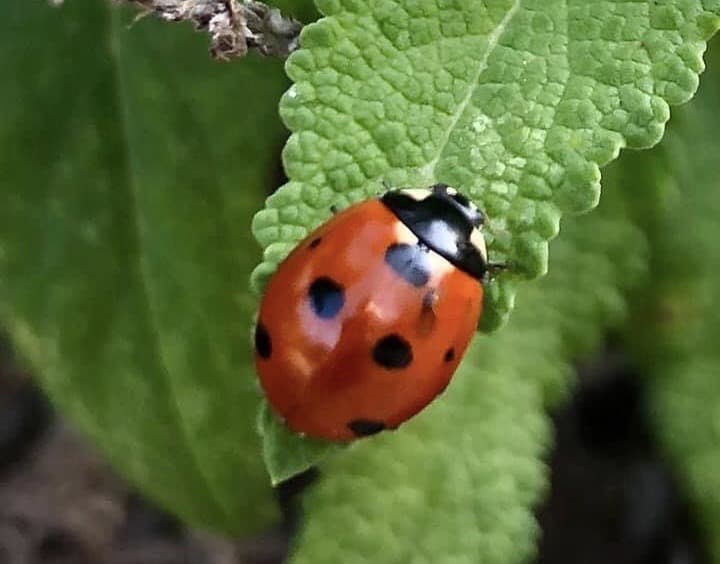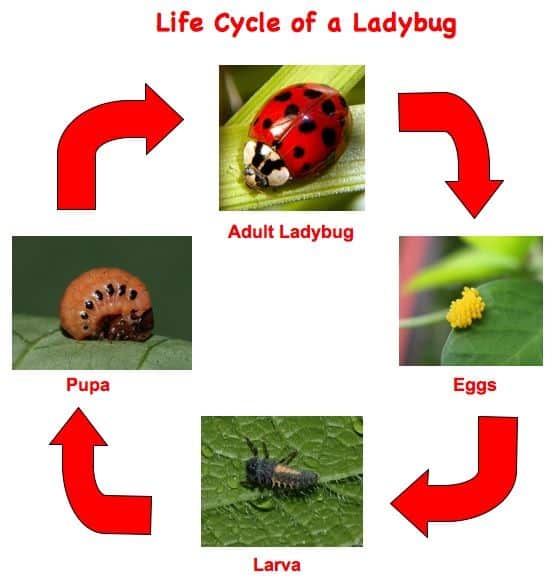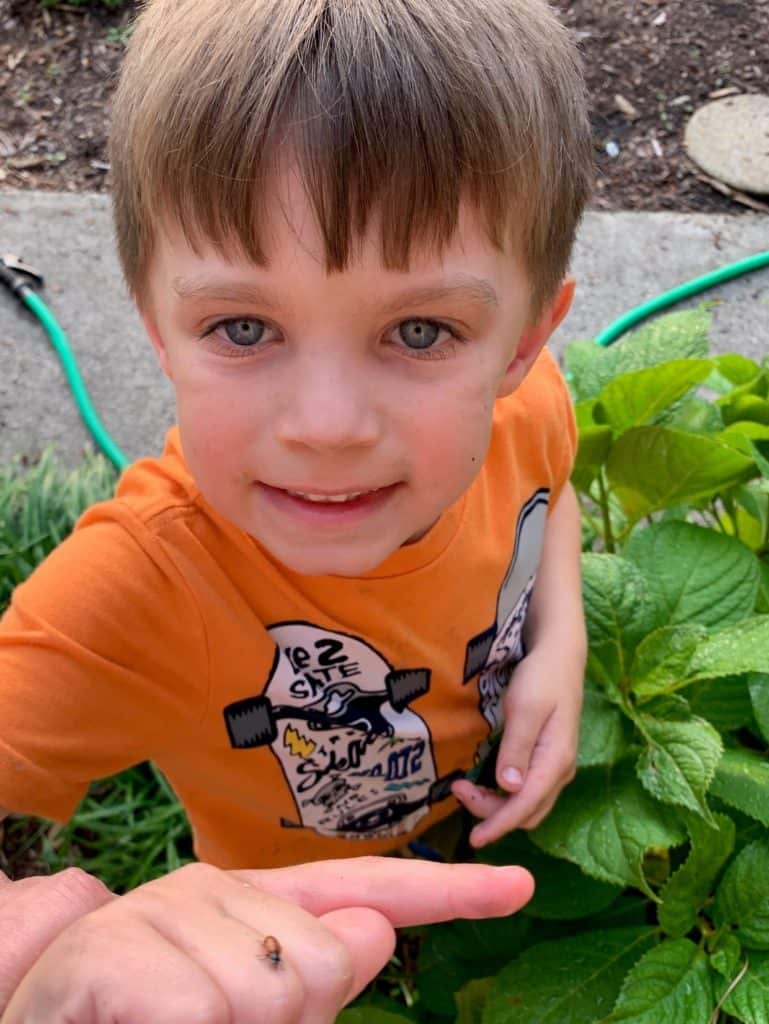Our Lady Beetle

We have all had a ladybug land on our arm or hand causing us to smile and marvel at its bright red cuteness before helping it move along to the nearest leaf or plant. These beloved bugs are part of the beetle family, known as Coleoptera. They are characterized by their oval-shaped body and distinctive coloring. According to legend, farmers during the Middle Ages in Europe, prayed for help with controlling the pest population that had been destroying their crops. Help came in the form of ladybugs, also called “Our Lady beetle”, who devoured the harmful pests and saved thousands of people from starving.
Both adult and larval ladybugs are known to prey on many other soft-bodied insects and insect eggs. Many of these insects are agricultural pests such as mealybugs and spider mites. A few ladybugs feed on plant and pollen mildews, even supplementing their meat diet with pollen. Ladybugs are not commonly eaten by birds, due to the distasteful fluid they discharge and their ability to play dead to avoid being preyed upon. However, several insects, such as stink bugs, spiders and even toads are known to snack on these pretty bugs.

Eggs laid by a female will hatch in three to ten days, depending on temperatures. The larva will live and grow for about a month before it enters the pupal stage, which lasts about 15 days. After the pupal stage, the adult ladybug will live up to one year.
A ladybug’s bright colors and spots serve as a warning to potential predators of the unpleasant liquid released when attacked. During the winter months, ladybugs seek out a warm place to hibernate. They mass together to stay warm throughout the winter, seeking out cracks around buildings and homes. A group of these beautiful beetles are referred to as a “loveliness”.

Ladybugs are believed to be a sign of good fortune and prosperity. As the insect leads a vibrant and colorful life, it influences you to experience the joys of living to the fullest. We hope you’ll let these vibrant colored bugs, keep warm this winter, bringing you infinite good luck!
Sources:
http://www.lostladybug.org/files/9%20LLP%20All%20About%20LadybugsPDF.pdf
https://www.nationalgeographic.com/animals/invertebrates/group/ladybugs/
